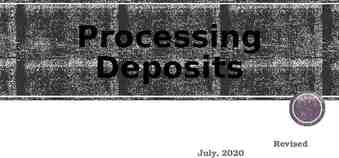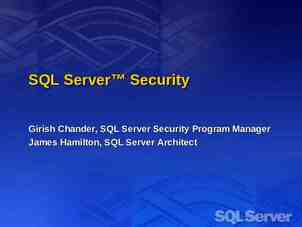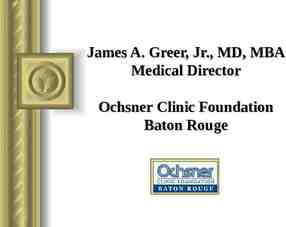Handling Claims with SelfRepresented Employees Presenter: James
39 Slides1.16 MB

Handling Claims with SelfRepresented Employees Presenter: James (JV) Thompson, Member, Rainey, Kizer, Reviere, & Bell, P.L.C.

Handling Claims with Self-Represented Claimants Presented by James V. Thompson June 2019

Understanding the Movements What’s Required? What’s Prohibited? What are the Players’ Roles? How do we Bridge the In-Between?

What’s Required For any documents filed with the Bureau, must serve a copy of same on all parties/counsel.

What’s Required – Initial Investigation Within 2 business days of notice of injury: Send Notice of Reported Injury Send Beginner’s Guide to TN Workers’ Comp. Make written/verbal contact with Employee Provide Claims Rep’s name and contact info

What’s Required – Initial Investigation Within 2 business days of assignment to different claims rep: Make written/verbal contact with Employee Provide new Claims Rep’s name and contact info Within 3 business days of request for medical care: Send panel of physicians

What’s Required – Initial Investigation Within 15 calendar days of notice: Decision on compensability If denied, within 5 business days of determination, send: Notice of Denial If accepted, within 5 business days of first benefits payment, send: First Report of Payment of Compensation

What’s Required – Initial Investigation If change in/termination of benefit payments, within 5 business days, send: Notice of Change/Termination of Compensation If later controverting liability, within 15 calendar days of due date of first omitted payment, send: Notice of Controversy

What’s Required – Initial Investigation Within 30 calendar days of Claims Rep’s receipt: Send PPI rating and MMI date Send all other info needed to settle a claim Send a written settlement offer

What’s Required Case Management Within 7 calendar days of notice of catastrophic injury, assign a case manager (if management is provided) Within 14 calendar days after assignment (catastrophic/non-catastrophic injuries): At least 1 face-to-face meeting with Employee Within 14 calendar days of notice of a significant decline in Employee’s medical condition, Another face-to-face meeting with Employee

What’s Required Mediation Promptly after a PBD is filed: Within 14 calendar days of receipt: Provide copies of any medical records related to the injury in a party’s possession Provide additional medical records received during a claim Within 15 business days after a DCN is filed (or 7 business days of mediator’s request): Provide a wage statement

What’s Required Litigation When filing Dispositive Motions: When filing Pre-hearing Briefs: Send the motion Send the rule or statute on which the motion is based Indicate any response requirement or deadline Send the brief Send any case or statute cited in the brief When submitting Orders, Joint Motions: Obtain the self-represented party’s actual signature No signing “by permission”

What’s Prohibited May not knowingly, willfully, or intentionally allow a compensable claim to be paid by health insurance or other accident insurance.

What’s Prohibited Do Not Mislead Be Honest Be accurate

Explaining Roles of the Various Players What is Employee’s expected role? Maintain point of contact Cooperate with medical investigation Accept the appropriate medical treatment

Explaining Roles of the Various Players What is Employer’s expected role? Receive information on claim from Employee Report claim to Claims Rep Provide payroll information Cooperate with efforts to investigate Cooperate with efforts to rehabilitate Employee

Explaining Roles of the Various Players What is Employer’s role after reporting claim? Is Employer conducting/leading investigation (versus Claims Rep)? Is Employer letting claim color its ongoing work relationship with Employee? What’s an “adjuster decision” versus an “employer decision”? What aspects of Employee’s work factor into claim investigations and decisions?

Explaining Roles of the Various Players What is Claims Rep’s role? Provide the required information Investigate the claim fairly and completely Provide the lawfully appropriate treatment and benefits

Explaining Roles of the Various Players What is Case Manager’s role? Advocate for Employee, versus Employer, versus doctor? Presenting doctor with facts bearing on treatment Assist Employee in understanding treatment scheduling (but not necessarily in understanding treatment reasoning?)

Explaining Roles of the Various Players “Thou shalt’s” for case managers: Develop treatment plan for appropriate medical services Monitor the treatment rendered and the medical progress Assess whether alternate medical care services are appropriate and delivered in a cost-effective manner Ensure the Employee is following the prescribed medical care plan Formulate a plan for Employee’s return to work

Explaining Roles of the Various Players “Thou shalt not’s” for Case Managers: Prepare physician’s panel or influence the employee’s physician choice Determine work relatedness Question the physician or employee on compensability Conduct or assist any party in claims negotiation, investigation, or any other nonrehabilitative activity

Explaining Roles of the Various Players “Thou shalt not’s” for case managers: Advise the Employee as to any legal matter (Settlement options, monetary recovery, claims evaluation, or applicability of workers’ comp act) Accept any compensation or reward from anyone based on settlement results Discuss with the Employee or physician what the impairment rating should be Reschedule medical appointments without first discussing the scheduling change with the Employee

Explaining Roles of the Various Players “Thou shalt not’s” for case managers: Refuse to provide case management reports to parties to the claim Assist in recording the Employee’s activity to help disprove the claim Deny or authorize treatment for purpose of guaranteeing prepayment or precertification

Explaining Roles of the Various Players What is the Mediator’s role? Help the parties identify the disputed issues Help the parties understand strengths/weaknesses of their positions Help the parties be aware of applicable law Help the parties reach mutual agreement on any/all of the issues

Explaining Roles of the Various Players What is the Ombudsman’s role? Explain basic legal principles Explain elements of claim and standard of proof Explain procedures What to expect, how to file, how to admit evidence Explain methodology of calculating comp rate, PPD Address legal questions from mediators Provide applicable general rules, statutes, cases Refer to forms, templates, legal info sources Explain strengths/weaknesses of case

Explaining Roles of the Various Players What is the Ombudsman’s role? Attempt to resolve disputes without ADR or litigation Communicate with all parties Assist parties in scheduling Facilitate in exchange of medical records

Explaining Roles of the Various Players What is not the ombudsman’s role? Not provide UNLIMITED legal advice Not testify in any proceeding Not make any litigation appearances Not draft or critique documents Not communicate with opposing party or Court Not advise on value of the claim Not advise on issues to raise on appeal

Explaining Roles of the Various Players What is the trial court’s role? Jones v. Dollar General, et al., No. 2017-070074( TN WC App. Bd. 9/22/17): Cannot offer legal advice to a party in case being adjudicated before them Caution against asking questions of witnesses Should not conduct Employee’s direct and redirect examinations Should not assist a party in satisfying the elements of claim or meeting his/her burden of proof

How Do We Handle the In-Between? Providing Connections Provide all reasonable contact points for Claims Reps/counsel Name, company name Phone, fax, email Obtain all possible contact points from Employee Name, address, phone(s), email of Employee Name, address, phone(s), email of Employee’s family member/alternate contact

How Do We Handle the In-Between? Providing Documents Provide by both email and regular mail Address Employee’s lack of ability to print documents Engage Employer to follow up with Employee Ensure Employee’s understanding of where and when to send documents

How Do We Handle the In-Between? Providing Communication Engage Employee to explain his or her side of the story Employee feels acknowledged and heard Claims Rep builds trust and credibility with Employee Claims Rep has opportunity to investigate more fully outside of litigation Claims Rep can help frame and manage Employee’s expectations of claim process

How Do We Handle the In-Between? Providing Communication Engage Employer to assist with claim process Employer can better document claim details Employer can provide any “back story” on the claim or Employee/Claimant Claims Rep has more evidentiary support for claims decisions Claims Rep has a better understanding of Employee’s background Employer may be a more trusted or credible information source

How Do We Handle the In-Between? Providing Communication Engage medical providers to explain their treatment plan and medical opinions Equip Case Managers to present all pertinent facts to doctor for treatment Use communications with authorized panel doctors to support claims decision-making Use communications from authorized panel doctors to explain process to Employees

How Do We Handle the In-Between? Providing Explain the need for information requests Sending interrogatories right off the bat with no explanation seems suspicious to wary Employees Refer Employees to the Ombudsman General Line for more explanation Context

How Do We Handle the In-Between? Providing Context Use Mediators to help bridge gaps in understanding Multiple discussions leading up to initial mediation Ability to give neutral comments on the “why” of parties’ positions and decisions Ability to play “devil’s advocate” on potential arguments Potential for postponements if further investigation warrants

How Do We Handle the In-Between? Providing Context Use Ombudsman to help bridge gaps in understanding Usually involved after the initial mediation Ability to frame Employee’s options on claim Including disputed-basis settlement options Helpful to get mediators back involved as an intermediary between Ombudsman/Employee and Claims Rep/Defense Counsel

How Do We Handle the In-Between? Learning from Experience What has worked in previous claims? What has not worked in previous claims? How has Employer learned to approach claimant? What concerns are you hearing from self-represented claimants? Where have parties felt “burned” or ignored in the past? What is the main claimant’s main concern?

Questions and Feedback Thanks for your attendance and feedback. If you have any questions or comments, please feel free to contact me: J.V. Thompson [email protected] 731.423.2414 x2260

Go-To Law Firm by Fortune 500 General Counsel Health and Wellness Award by the Chamber of Commerce 2012 Voted Best Law Firm by Readers’ Choice Awards 2007 Cornerstone Award Recipient by the Chamber of Commerce 2006 Small Business of the Year Award by the Chamber of Commerce 1996 Business and Finance Employment and Civil Rights Estate Planning, Wills, and Trusts Healthcare Mediation Litigation Professional Malpractice Defense Tort and Insurance Defense www.RaineyKizer.com Memphis Jackson Nashville Chattanooga






